The 1971 Dodge Challenger R/T 426 Hemi is an iconic muscle car that continues to captivate car enthusiasts and collectors alike. With its powerful engine, striking design, and limited production numbers, this Challenger model holds a special place in automotive history. In this article, we’ll delve into the details of this remarkable vehicle and explore what makes it a true standout in the muscle car world.
Childhood Memories and Connection to the Car
When reminiscing about the 1971 Dodge Challenger R/T 426 Hemi, a wave of nostalgia often washes over enthusiasts. Many individuals recall playing with miniature versions of this car during their childhood. The bright red exterior, white top, and white interior evoked a sense of awe and admiration even in scaled-down form. These childhood memories create a personal connection to the full-sized machine, amplifying the excitement and appreciation for this classic muscle car.
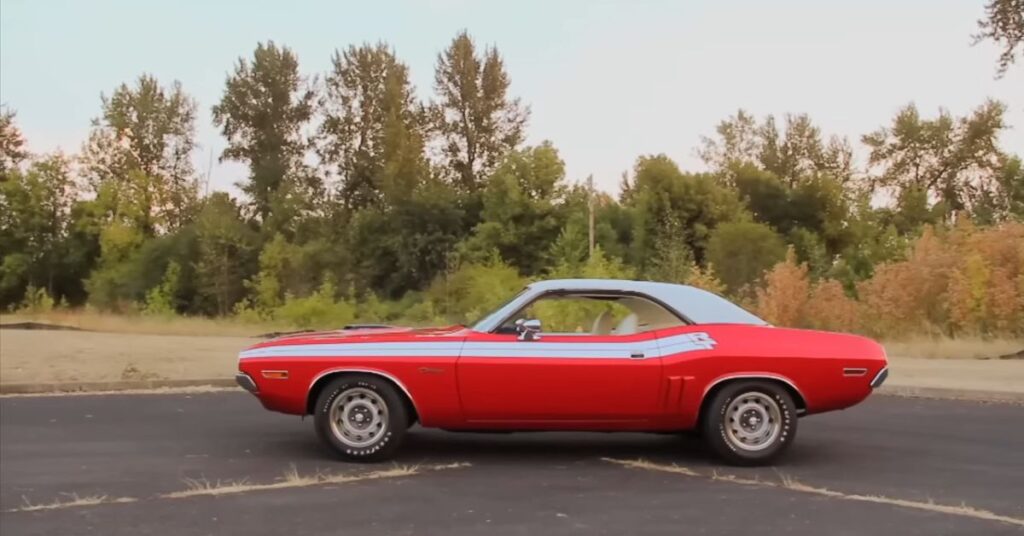
One of the most remarkable aspects of the 1971 Dodge Challenger R/T 426 Hemi is its exclusivity. With only 71 models produced for the 1971 model year, owning one of these vehicles is like possessing a rare gem. The limited production numbers make this Challenger variant highly sought after by collectors, driving up its desirability and value. Each unit represents a piece of automotive history, showcasing the pinnacle of performance and engineering from that era.
Bold Design and Attention-Grabbing Appearance
The 1971 Dodge Challenger R/T 426 Hemi demands attention with its bold design and vibrant red color. Painted in code fe-5 bright red, this muscle car is impossible to overlook. The RT package adds a white stripe kit that runs along the side, perfectly complementing the brightly colored white vinyl top. From every angle, the Challenger exudes an aura of power and performance, leaving no room for subtlety. This car was meant to be noticed, and it undoubtedly achieves that goal.

The RT styling details continue to impress. The Challenger features a very thin wheel lip molding and simulated rear brake ducts on the quarter panels. The white RT stripe extends from front to back, harmoniously blending with the vinyl top and rear wheel arch. The blacked-out tail pan, along with the fine trim surrounding it, adds a touch of elegance to the rear. The dual exhaust with chrome-plated tips protruding through the lower valance panel further emphasizes the car’s performance-oriented nature. The overall design of the 1971 Dodge Challenger R/T 426 Hemi incorporates numerous cool and intricate details, confirming its status as a true performer.
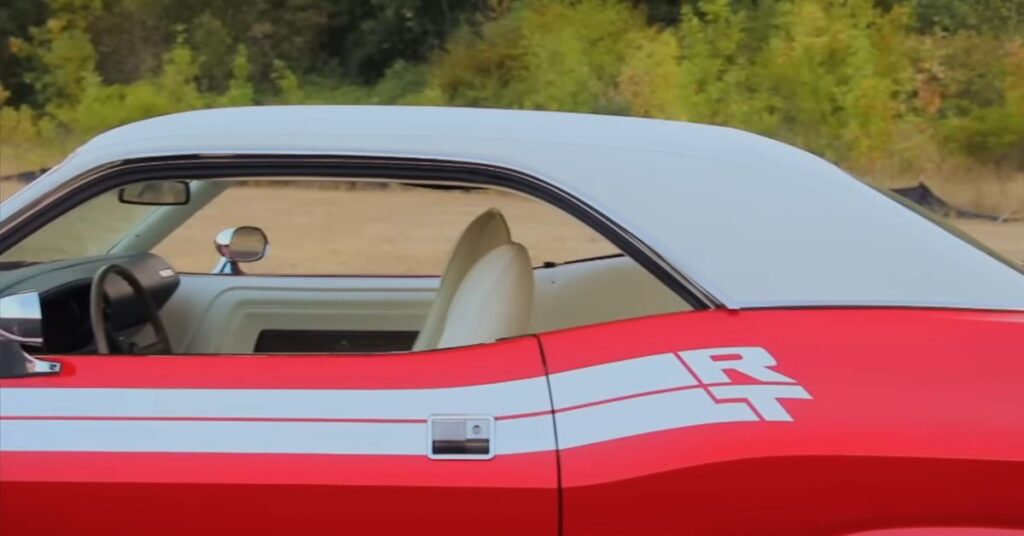
Inside the Challenger’s cabin, acres of white await. The white vinyl top pairs beautifully with the optional high-back vinyl bucket seats, creating a visually striking interior. The dashboard showcases the rally gauge pack, featuring a 150 mph speedometer, an 8,000 rpm tachometer, and a four-pack of gauges displaying fuel level, temperature, voltage, and oil pressure. The unique clock, with its dual-ring display for hours and minutes, adds a touch of character. The interior of the 1971 Dodge Challenger R/T 426 Hemi is a blend of style and functionality, providing both comfort and an engaging driving experience.
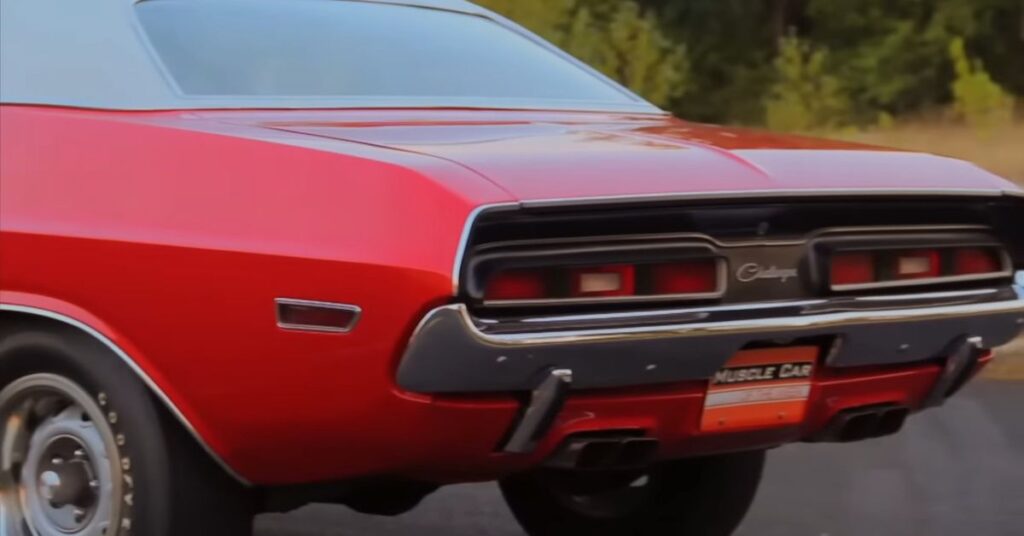
The combination of the 1971 Dodge Challenger R/T 426 Hemi’s bold design, attention-grabbing colors, and well-crafted interior creates a truly remarkable muscle car. It’s a testament to the era of American automotive history that valued power, performance, and visual impact. The Challenger’s distinctive features and meticulous attention to detail make it an iconic and highly sought-after collector’s car. Whether it’s the vibrant exterior or the inviting interior, the 1971 Dodge Challenger R/T 426 Hemi captivates enthusiasts and continues to evoke a sense of admiration and appreciation for the golden age of muscle cars.
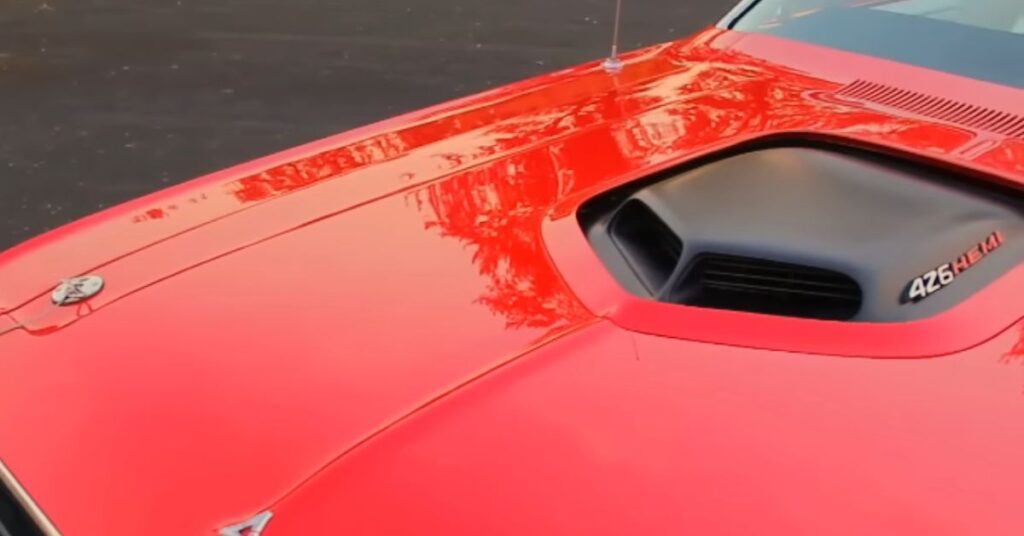
Power and Performance of the 426 Hemi Engine
At the heart of the 1971 Dodge Challenger R/T 426 Hemi lies its most significant asset—the legendary 426 Hemi engine. This monstrous powerplant delivers a staggering 425 horsepower and 490 foot-pounds of torque. Known as “the elephant” for its size, the 426 Hemi features hemispherical combustion chambers that maximize airflow. To accommodate the engine’s thirst for air and fuel, the Challenger is equipped with two four-barrel carburetors, making it a force to be reckoned with on the open road.
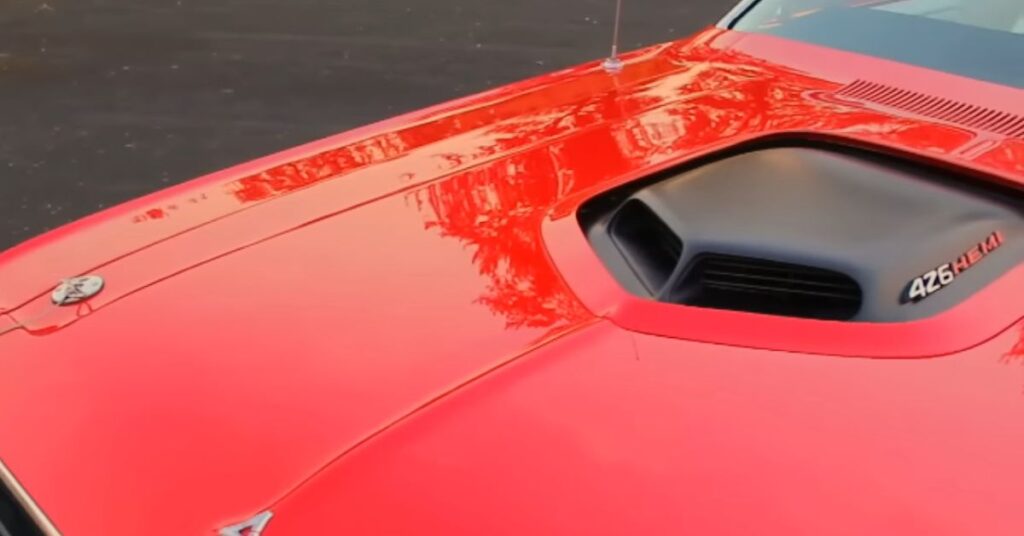
The 426 Hemi engine is not just a powerhouse, but also a work of art under the hood. Lift the shaker hood scoop, and you’ll be greeted by a sight that demands respect. The inner fenders and firewall are painted in body color, emphasizing the engine’s prominence. The bright red paintwork further enhances the visual impact when the hood is opened. Despite its impressive power and performance, the 426 Hemi engine was not without its challenges. Tuning the air-fuel ratio on a dual four-barrel setup required skill and precision, showcasing the engineering expertise of its time.
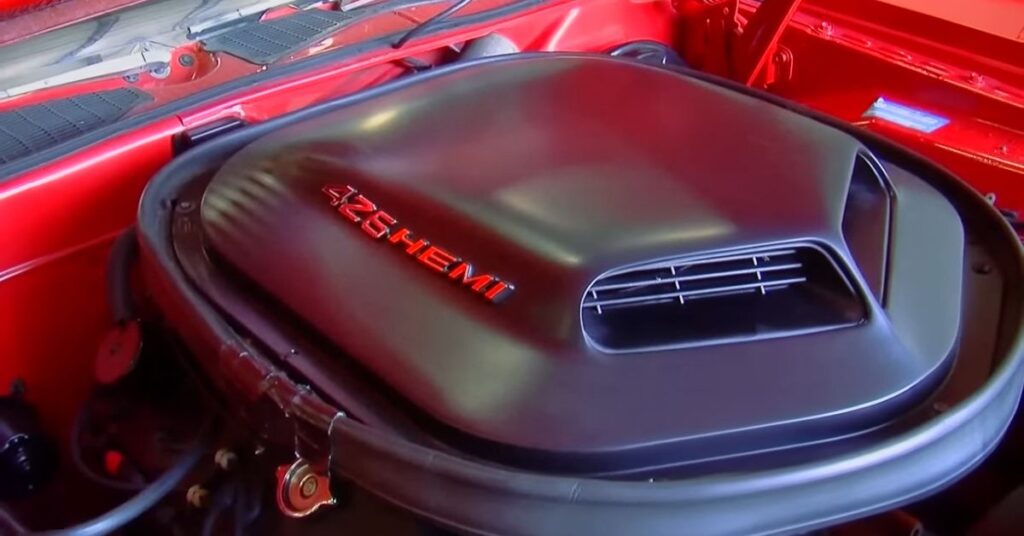
Today, the 1971 Dodge Challenger R/T 426 Hemi remains a highly coveted and cherished muscle car. Its combination of stunning design, powerful engine, and attention to detail make it an icon of American automotive history. Whether on display at a car show or roaring down the street, this classic muscle car never fails to turn heads and evoke a sense of awe. The 1971 Dodge Challenger R/T 426 Hemi stands as a testament to the golden age of muscle cars, leaving a lasting impression on enthusiasts and collectors alike.
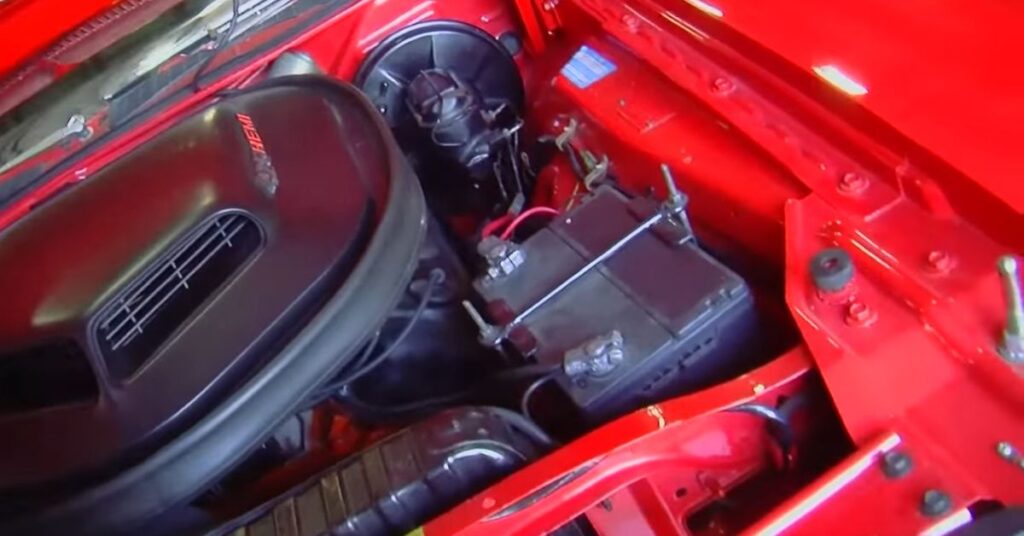
Changes in Insurance Premiums and Impact on Muscle Car Market
While the 1971 Dodge Challenger R/T 426 Hemi may have been a dream car for many, it faced challenges due to rising insurance premiums during that era. Compared to its 383 or 440 counterparts, the Hemi cars demanded significantly higher insurance costs. This factor, combined with changing market dynamics and increased regulations, affected the demand for these high-performance vehicles. Despite the obstacles, the Challenger R/T 426 Hemi remains a symbol of an era defined by power, style, and adrenaline.
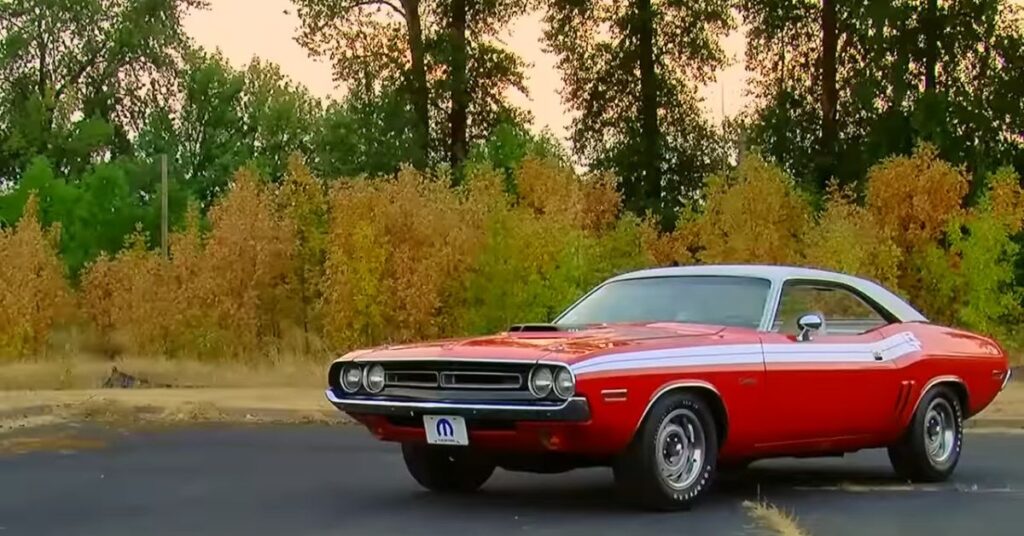
The 1971 model year brought about some changes in the styling of the Dodge Challenger. While the front grille received minor modifications, the most notable addition was the black shaker hood scoop. The shaker hood, which vibrates when the engine starts, adds a distinct visual appeal to the car. It is arguably one of the most visually striking hood scoops ever installed on a muscle car, emphasizing the Challenger’s aggressive and performance-oriented nature.
Notable Exterior Features and Details
The exterior of the 1971 Dodge Challenger R/T 426 Hemi boasts several distinctive features and details. The absence of rocker moldings and the presence of a thin wheel lip molding contribute to the car’s sleek appearance. Simulated rear brake ducts adorn the quarter panels, while the RT stripe package runs from the front to the back, integrating harmoniously with the vinyl top and rear wheel arch. The blacked-out tail pan, surrounded by fine trim and chrome exhaust tips, further accentuates the car’s sporty and purposeful character.
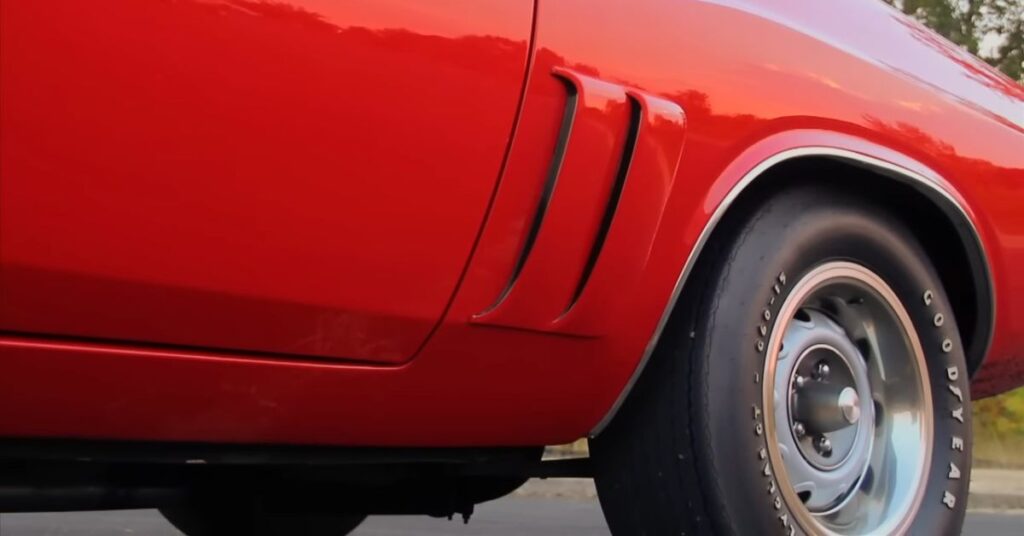
To ensure optimal performance and handling, the 1971 Dodge Challenger R/T 426 Hemi is equipped with Goodyear Polyglas GT tires. The front tires are F60 15s, while the rears are slightly wider G60 15s, allowing for enhanced cornering abilities. Additionally, the car features chrome plated sport mirrors on both the driver and passenger doors. These mirrors not only serve a practical purpose but also add a touch of racing-inspired style, enhancing the overall aesthetics of the vehicle.
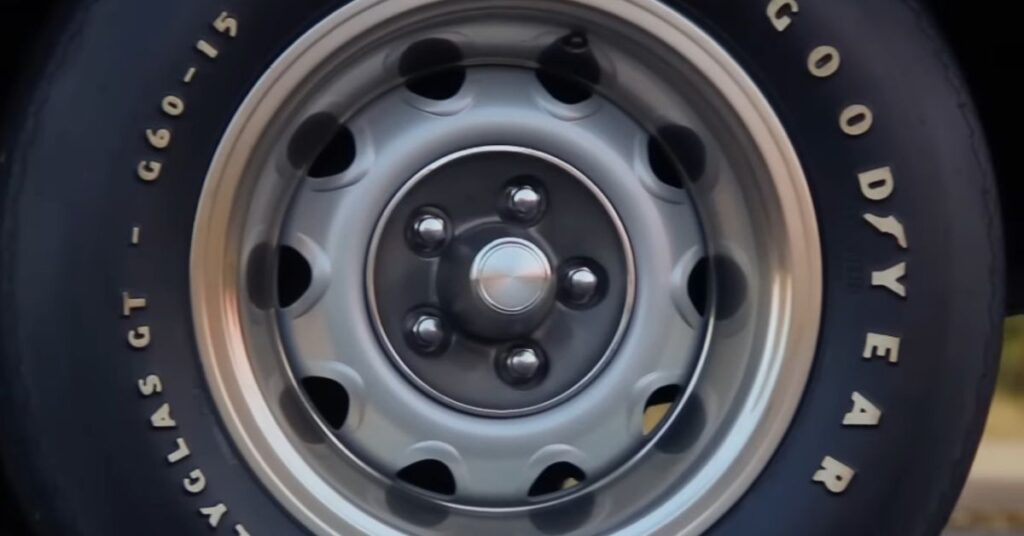
Acres of White: The Eye-Catching Interior
Stepping inside the 1971 Dodge Challenger R/T 426 Hemi reveals a captivating sight—acres of white. The white vinyl interior creates a visually striking contrast against the vibrant red exterior. The optional high back vinyl bucket seats provide comfort and support for both driver and passengers. The dashboard is fitted with the rally gauge pack, which includes a 150 mph speedometer, an 8,000 rpm tachometer, and a four-pack of gauges for fuel, temperature, voltage, and oil pressure. The unique clock, with its hours and minutes called out in two different rings, adds a touch of intrigue to the interior design.
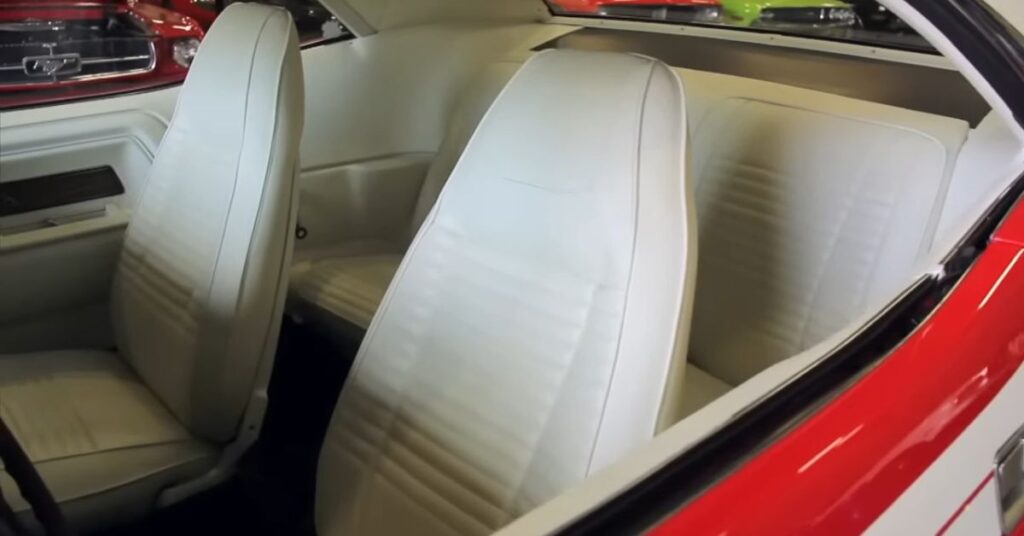
The white-dominated interior of the Challenger not only looks stunning but also contributes to a refreshing and airy atmosphere. The vinyl material is not only visually appealing but also easy to maintain, ensuring the interior remains in pristine condition. The high back vinyl bucket seats offer excellent support and comfort, making long drives a pleasure. Whether you’re cruising down the highway or roaring through winding roads, the interior of the 1971 Dodge Challenger R/T 426 Hemi creates a truly immersive driving experience.
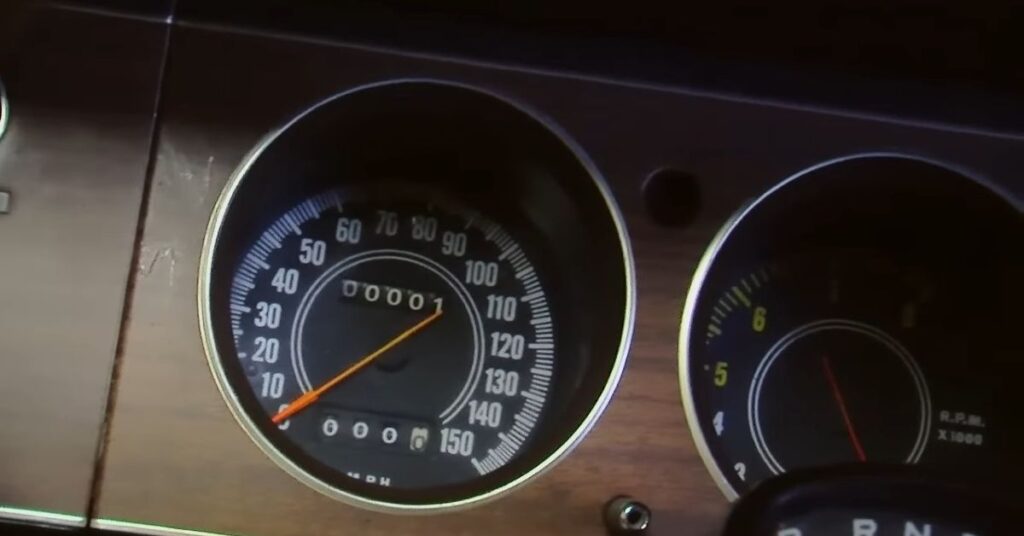
The dashboard of the Challenger is a masterpiece of design and functionality. The rally gauge pack provides essential information at a glance, allowing the driver to stay informed and in control. The speedometer’s capability of reaching 150 mph highlights the car’s impressive performance potential. The tachometer’s 8,000 rpm range speaks to the engine’s ability to deliver power throughout the rev range. The four-pack of gauges ensures that crucial parameters such as fuel level, temperature, voltage, and oil pressure are constantly monitored. The unique clock design adds a touch of sophistication and serves as a conversation piece among car enthusiasts.
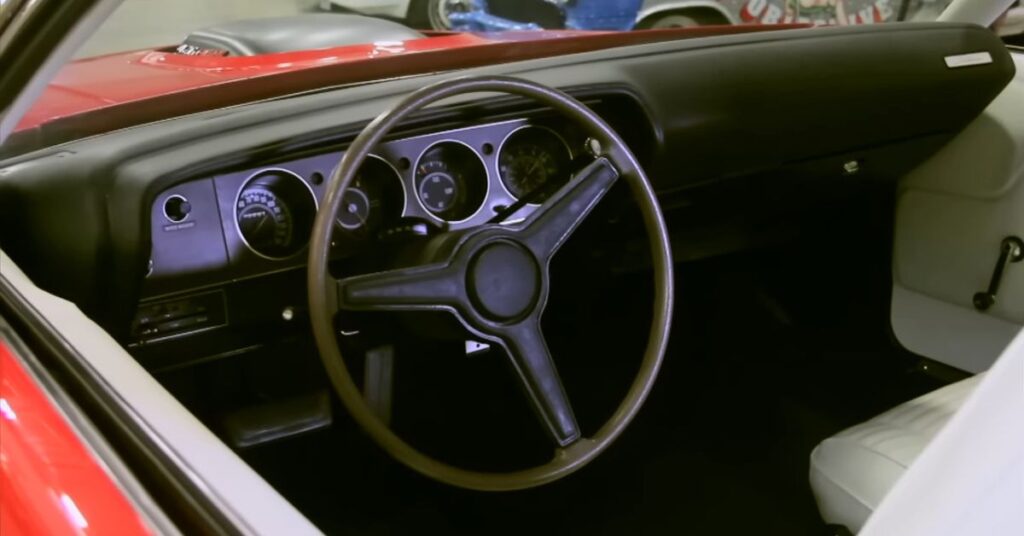
In conclusion, the interior of the 1971 Dodge Challenger R/T 426 Hemi is a blend of style, comfort, and practicality. The white vinyl interior, coupled with the rally gauge pack and unique clock, creates an engaging and visually appealing driving environment. Whether you’re enjoying a leisurely cruise or pushing the car to its limits, the interior of the Challenger adds to the overall experience, making every moment behind the wheel memorable.
A Glimpse into the Past: Emission Control Sticker
One interesting detail found on the 1971 Dodge Challenger R/T 426 Hemi is the vehicle emission control sticker on the inner fender. The sticker reveals various specifications, including the idle setting, timing, and air-fuel ratio mixture. With an idle setting of 950 rpm in neutral and 2 degrees before top dead center for timing, the car was optimized for performance.
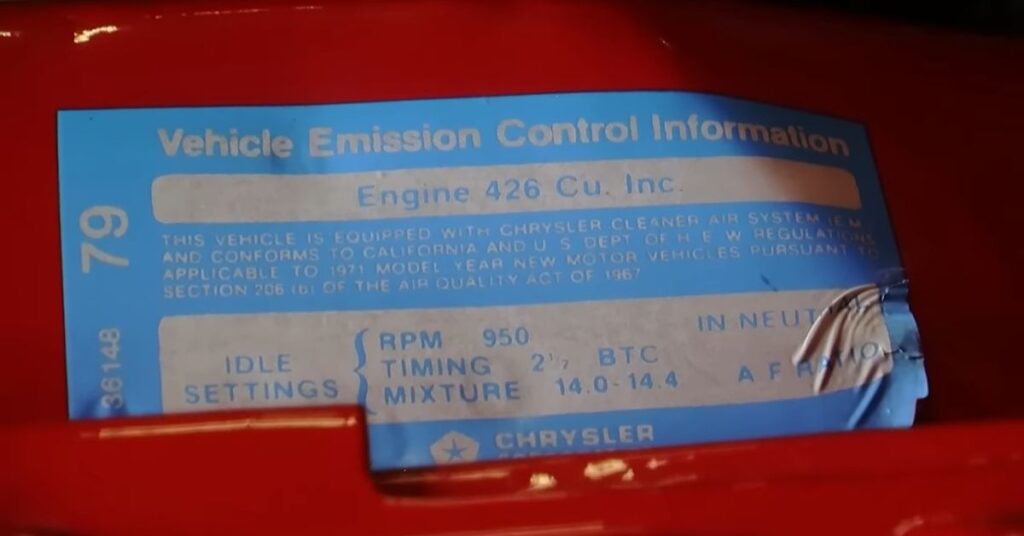
The air-fuel ratio range of 14.0 to 14.4 to 1 highlights the technical challenges of achieving proper tuning for maximum power output. It is a testament to the engineering marvels of that era and the ongoing evolution of automotive technology.
A Rare Gem in the Brothers Collection
The 1971 Dodge Challenger R/T 426 Hemi is not the only gem in the Brothers Collection. In fact, another rare and remarkable 1971 Hemi Challenger, a convertible model, has also found its way into the collection. The Brothers Collection showcases some of the most sought-after and iconic muscle cars, providing enthusiasts and collectors with an opportunity to admire and appreciate these automotive treasures. To learn more about the collection and explore other fascinating muscle cars, visit the Muscle Car of the Week website and sign up for their email newsletter.
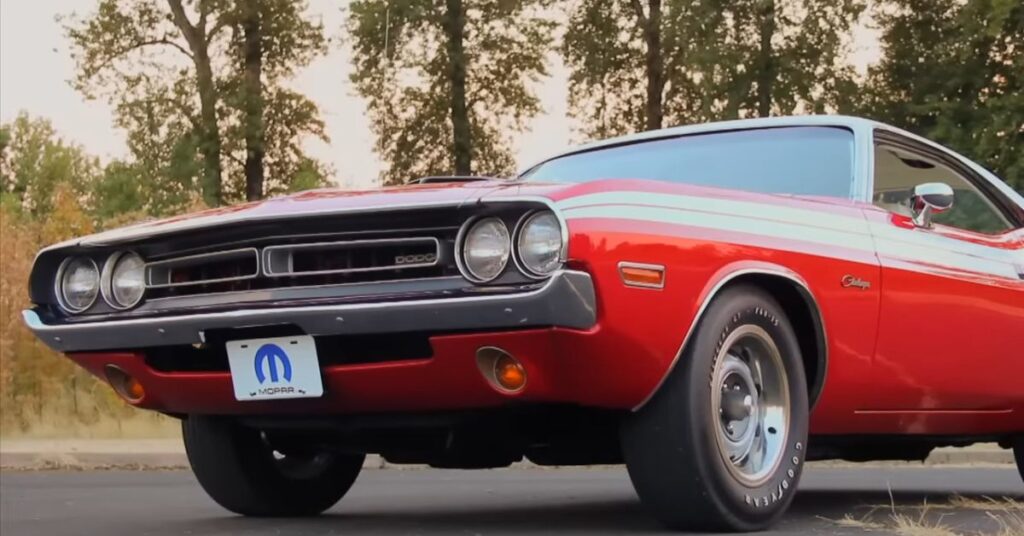
Conclusion
The 1971 Dodge Challenger R/T 426 Hemi is a legendary muscle car that captures the essence of American automotive history. With its bold design, powerful engine, and attention-grabbing appearance, this Challenger is an icon of the golden age of muscle cars.
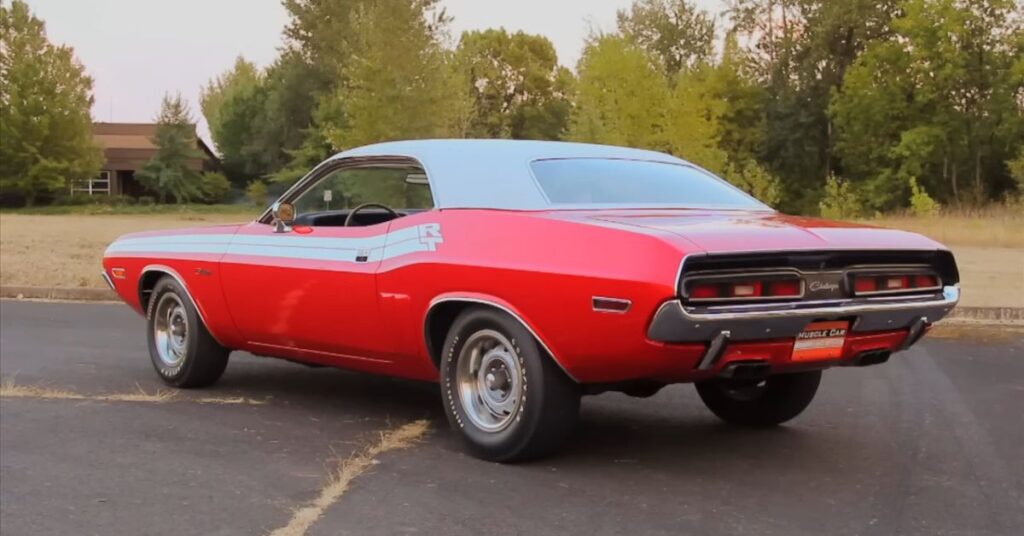
Despite the challenges it faced, including rising insurance premiums and changing market dynamics, the 426 Hemi Challenger remains a highly desirable and valuable collector’s car. Its distinctive features, such as the shaker hood scoop, white vinyl top, and acres of white interior, contribute to its allure and timeless appeal. The 1971 Dodge Challenger R/T 426 Hemi is a true testament to the passion, craftsmanship, and engineering excellence of that era.
